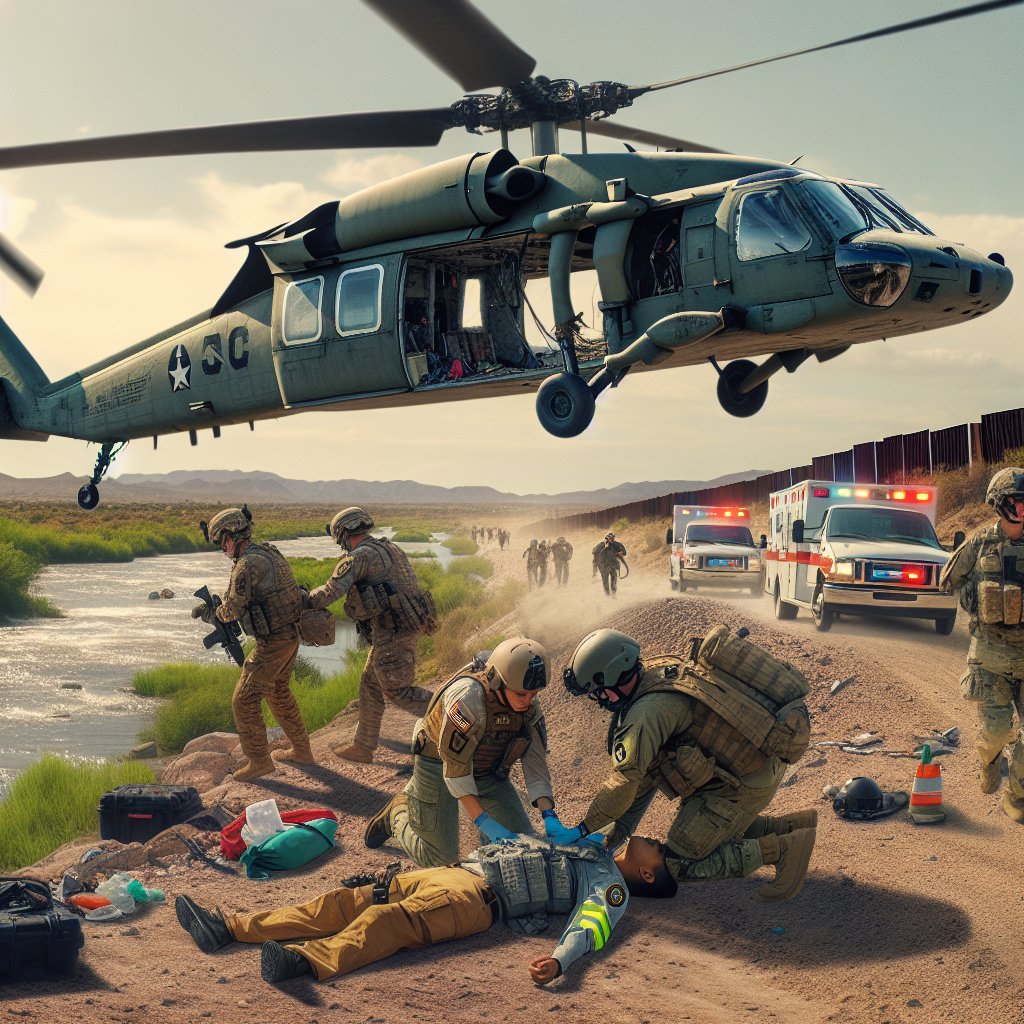Image created by AI
Tragic Helicopter Crash Results in Three Fatalities During US Border Patrol Mission in Texas
In a harrowing incident on a quiet Friday afternoon, a routine border patrol operation turned catastrophic when a National Guard UH-72 Lakota helicopter crashed near Rio Grande City, Texas. The tragic event resulted in the loss of three lives: two soldiers from the National Guard and a U.S. Border Patrol agent who were conducting aerial monitoring and detection operations along the US-Mexico border. The crash, which occurred around 2:50 pm, also left another soldier injured amidst the debris of a mission turned upside down.
US Army Major Ryan Wierzbicki, affiliated with Joint Task Force North, shed light on the circumstances surrounding the crash. According to Major Wierzbicki, the helicopter was engaged in a federal Southwest border support mission, aimed at reinforcing the security measures along the precarious borderlands that have long been a nexus of debate and policy-making.
The chopper, he noted, took flight from its base of operation at Fort Bliss, Texas, and was an asset integral to the Task Force's mandate, though distinct from Operation Lone Star, a specific border enforcement initiative led by Texas Governor Greg Abbott.
The aftermath of the crash saw a quick mobilization of response teams, but despite their best efforts, the grave situation could not be overturned. The cause of the accident remains a subject of intense inquiry, with officials deeply entrenched in forensic and field investigations. As of the moment, little is known about what precipitated this tragic descent, and weather conditions at the time have not been disclosed or linked to the incident.
The community grieved as the identities of the deceased remained unannounced, with the military maintaining a respectful silence until the families of the soldiers and agent could be duly informed.
Such border patrol operations are part of larger security strategy aimed at monitoring the extensive US-Mexico border, a region that has seen its share of controversy and conflict. These missions involve complex coordination between various law enforcement entities and military branches and are deemed essential for national and border security.
As the events of the day unfold, the larger conversation around the safety of military operations, the demands placed upon servicemen and women, and the inherent risks of flying within such challenging environments comes to the forefront. The community, state, and nation await answers in the wake of a harrowing reminder of the costs associated with maintaining the line between order and chaos on the nation's borders.
The investigation continues to unravel the enigma behind the accident, as the nation mourns the loss of their service members and reflects on the perils faced by those who don the uniform.










